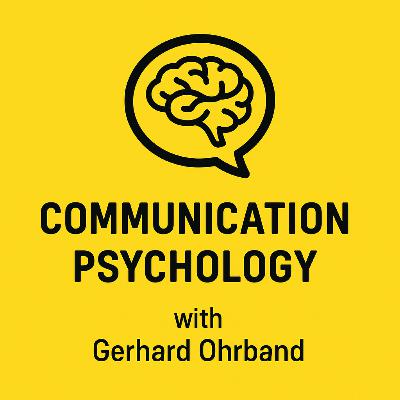How to become more flexible in your conversations
Description
In this episode of CommunicationPsychology, we explore how to becomemore flexible in your conversations — not just talking, but trulyadapting and connecting across contexts.
Drawing from cutting-edge research, we examinepractical strategies like:
· Building cognitiveflexibility to better tune into conversational cues (Chesebro &Martin, 2003; Richter et al., 2020)
· Developing a communication flexibility mindset through self-awarenessand situational adjustment (Martin & Rubin, 1995)
· Navigating cultural contexts by adapting communication styles todiverse backgrounds (Hall, 1976; Klopf, 2009)
How can we systematically broaden ourconversational horizons? By engaging with content from different regions, professions, and cultures—literature,podcasts, interviews—that challenge our habitual frames.
Tune in to learn:
✓ Why flexibility matters (for empathy, influence,resilience)
✓ How to train your conversational muscle throughexposure
✓ Real examples and exercises to deepen adaptability
Join the conversation! How have you adaptedyour communication style in unexpected situations? Drop your insights orquestions in the comments 👇 and let’s build a moreflexible, inclusive dialogue landscape together.
#communication #psychology #intercultural#flexibility #podcast #conversations #listening
Recommended reading:
Chesebro, J.W., & Martin, M. M. (2003). Therelationship between conversational sensitivity, cognitive flexibility, verbalaggressiveness and indirect interpersonal aggressiveness. Communication Research Reports, 20(2), 143–150.
Hall, E. T. (1976). BeyondCulture. New York, NY: Doubleday.
Klopf, D. W. (2009). Interculturalcommunication encounters (7th ed.). Boston, MA: Allyn & Bacon.
Martin, M.,& Rubin, R. B. (1995). Thedevelopment of a communication flexibility measure. Communication Research Reports, 12(2), 145–158.r
Richter, F.,Segerer, P., & Knoblich, G. (2020). Anapproach to social flexibility: Congruency effects during word-by-word turntaking. PLOS ONE, 15(5), e0235083.





